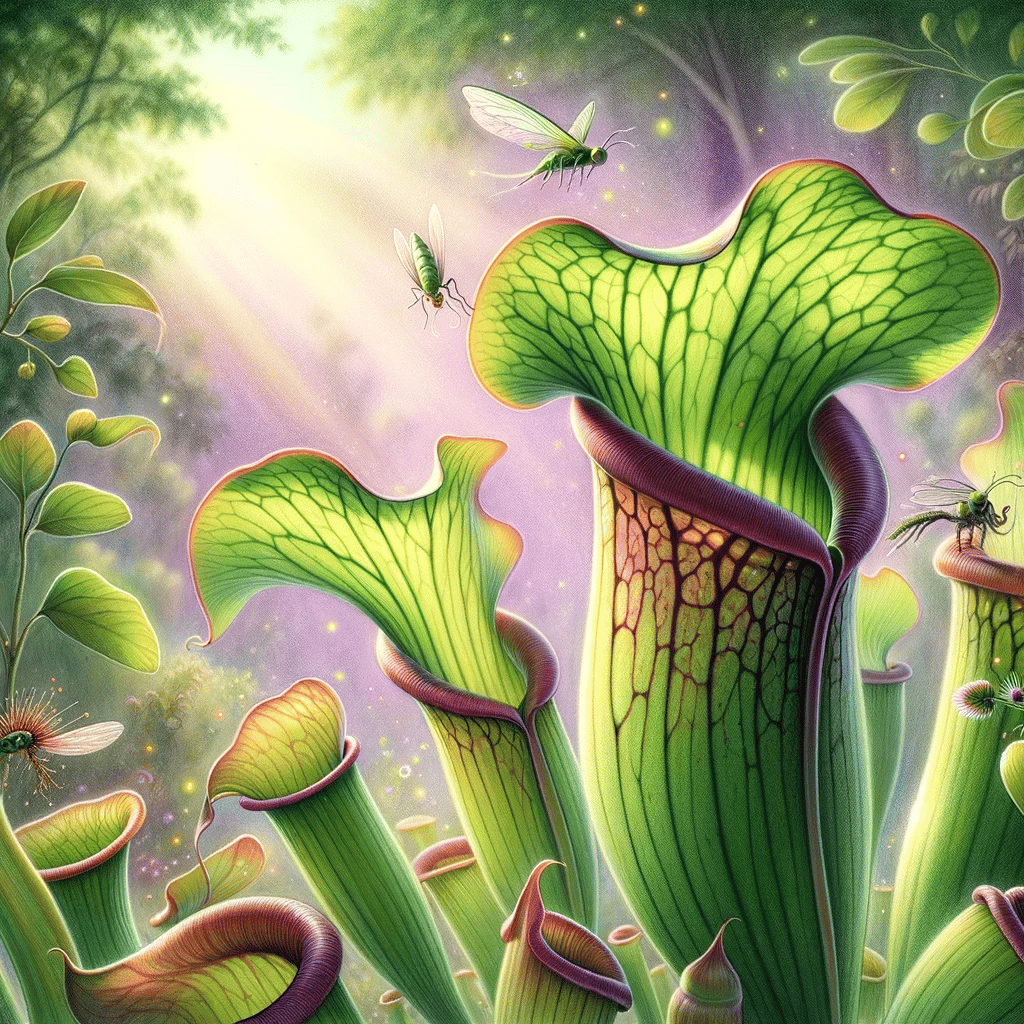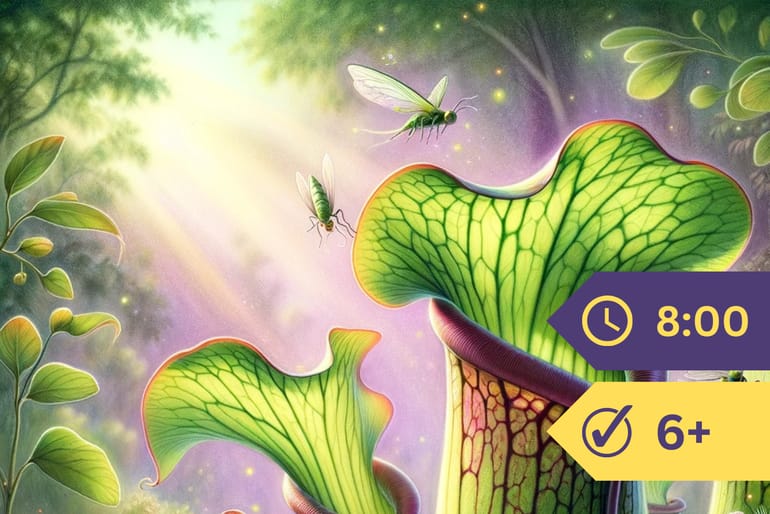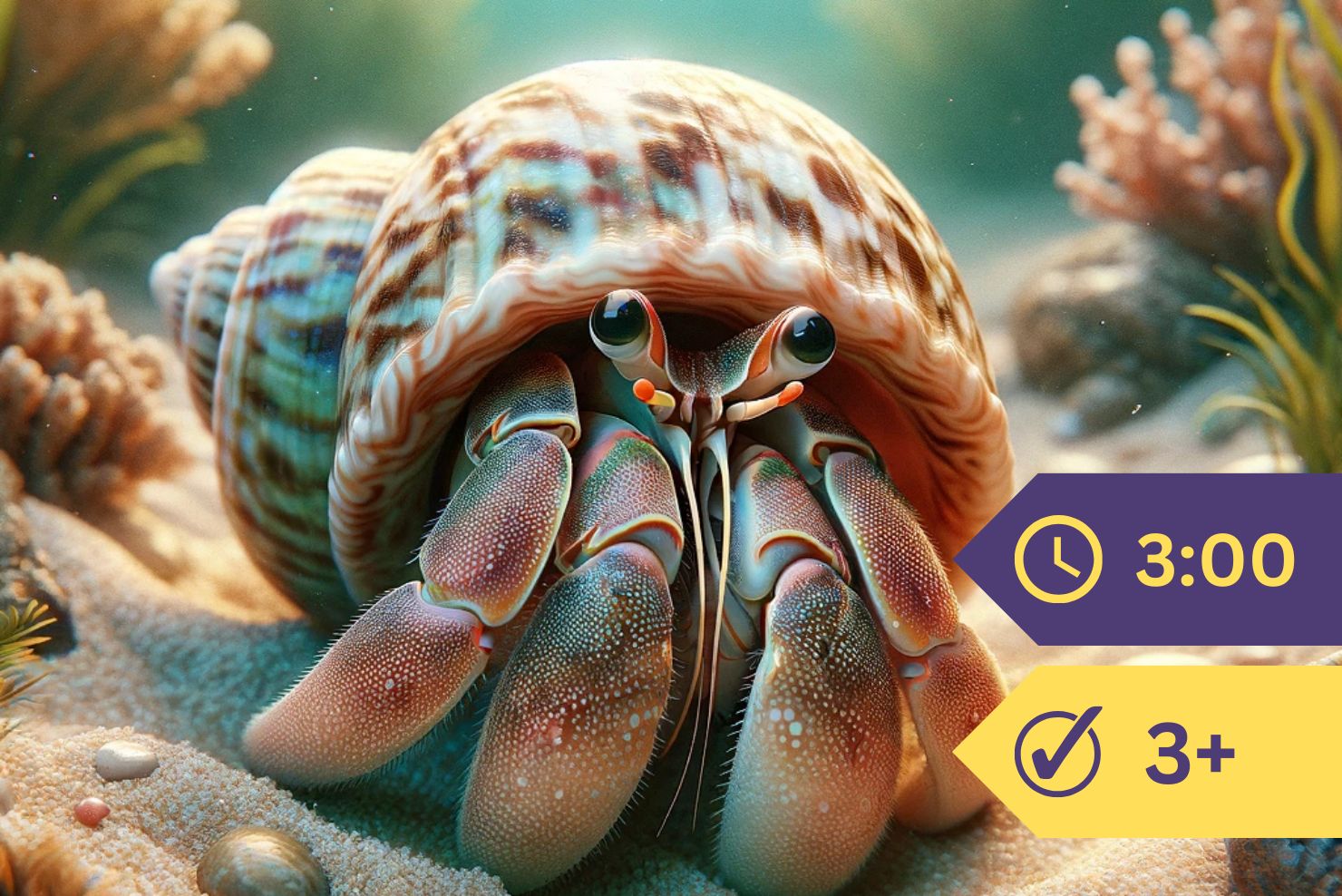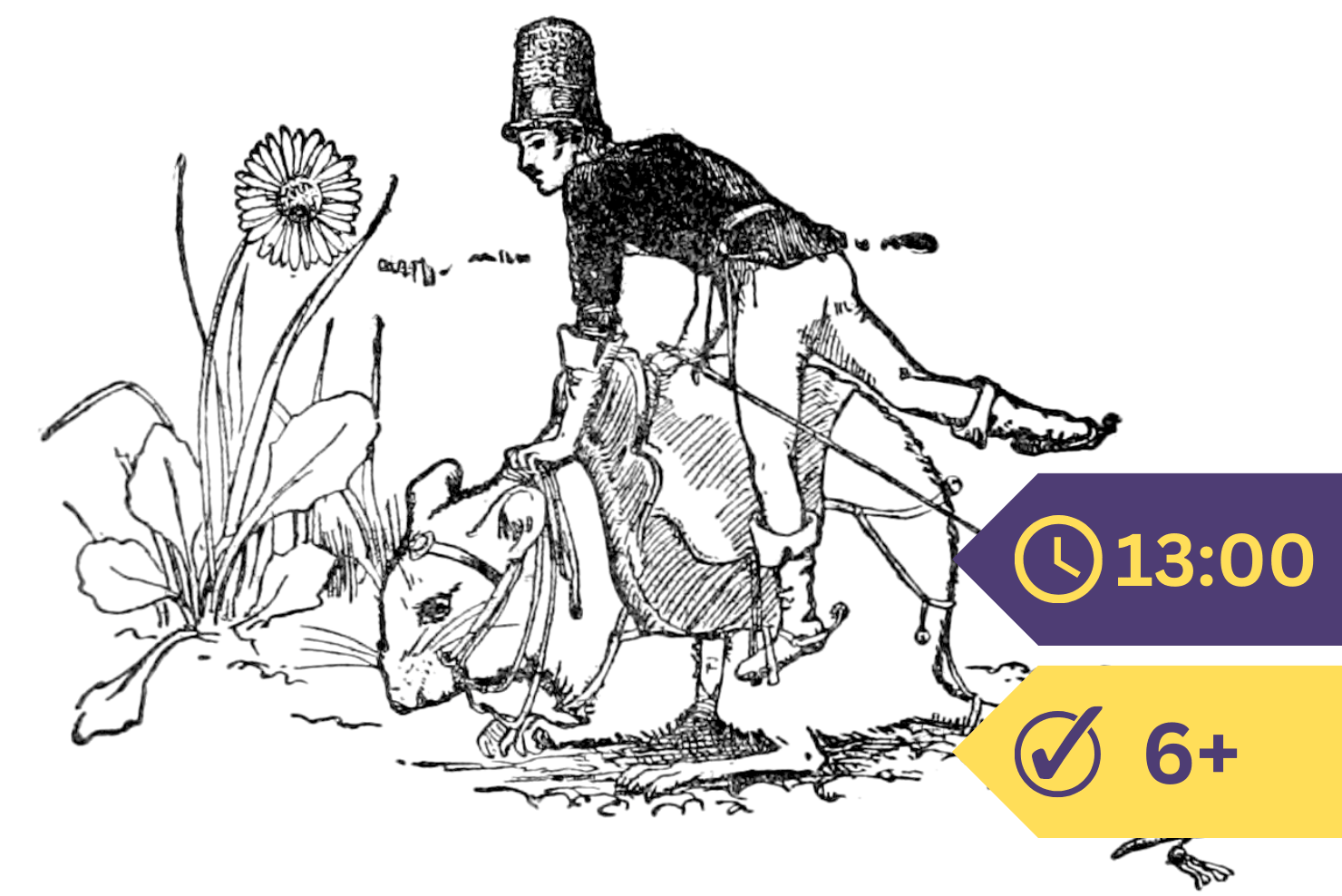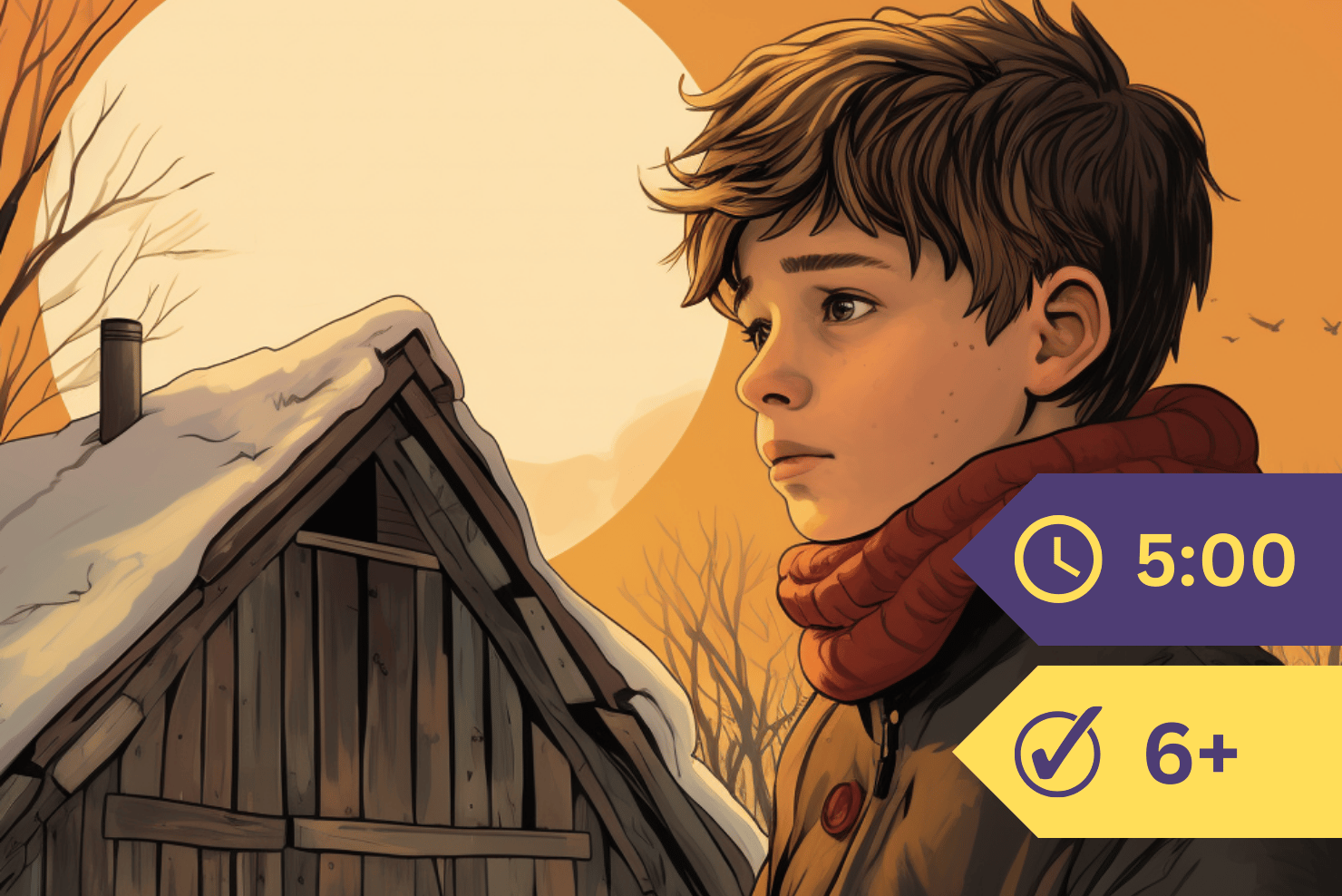Have you ever seen a leaf like the one in this picture?
It is shaped something like a pitcher; and the plant on which it grows has been named the “pitcher plant.”

The pitcher plant lives in low, wet place, such as the shaded swamp, or the marsh down by the lake.
On account of its curious leaves it is brought to the cities, and is sold on the street corners or at the florists’.
In June comes the great flower of the pitcher plant. Sometimes this is a dull red; again it is a delicate pink or perhaps a light green; and it has faint, pleasant fragrance.
Next June I hope that some of you children will find these beautiful flowers and these curious leaves.
Why should a leaf be shaped like a pitcher, do you suppose?
These leaves are not only pitcher-like in shape, but also in their way of holding water; for if you succeed in discovering a settlement of pitcher plants, you will find that nearly every pitcher is partly filled with rain water. Usually this water is far from clear. It appears to hold the remains of drowned insects; and sometimes the odor arising from a collection of these pitcher plants is not exactly pleasant.
Perhaps you wonder how it happens that dead insects are found in every one of these pitchers; and possibly you will be surprised to learn that apparently these curious leaves are built for the express purpose of capturing insects.
It is easy to understand that these odd leaves are not so well fitted as more simple ones to cook the plant’s food in the sun, or to take carbon from the air; but if they are unfitted to provide and prepare ordinary food, possibly they are designed to secure food that is extraordinary.
It seems likely that the pitcher plant is not content to live, like other plants, upon the simple food that is taken in from the earth and from the air. We are led to believe that it wishes something more substantial; that it needs a meat diet; and that to secure this, it teaches its leaves to capture flies and insects in order that it may suck in their juices.
These leaves are veined in a curious and striking fashion. The bright-colored veins may convince the insects of the presence of the sweet nectar in which they delight. At all events, in some way they are tempted to enter the hollow leaf; and, once they have crawled or tumbled down its slippery inner surface, they find it impossible to crawl back again, owing to the stiff hairs, pointing downward, which line the upper part of the pitcher.
Even if they have wings, it is difficult for them to fly upward in so straight a line as would be necessary to effect their escape.
When tired out in their efforts to get out of this cruel trap, they fall into the water at the bottom of the pitcher, and are drowned. Their bodies decay and dissolve; and it is thought that this solution is taken in by the leaf, and turned over to the plant as food.
It is just the old, sad story of the spider and the fly, you see, only now it is the pitcher and the fly.
But be sure to examine one of these pitchers if you possibly can, and then you will understand better how the whole thing is managed.
The leaf in this picture, for it is a leaf, you cannot find in our North American swamps. It grows on a plant called Nepenthes, a plant which lives in hot countries far from the United States.

The leaf in the picture is full grown, and all ready for its work of trapping animals. Before it was old enough to do this, the lid which is now lifted was laid nicely across the opening to the pocket, and so prevented any unseasonable visits.
Sometimes these pockets are so large as to be able to hold and to hide from sight a pigeon. They are gayly colored, and the rim around their border is covered with a sugary, tempting juice. So you can guess that the animals in search of nectar are not slow in accepting the invitation offered by color and sweets, and that some of these are imprudent enough to venture across the sticky edge. In this event they are pretty sure to lose their footing on the slippery inner surface of the pocket, and to fall into the watery liquid with which it is filled. Even if they do not slip immediately, their efforts to crawl back over the rim are defeated by a row of teeth such as you see in the picture.
The liquid at the bottom of the leaf is not rain water, as in the pitcher plant. It is given out by the leaf itself; and it contains an acid which dissolves the animals’ bodies, so that their more nourishing parts can easily be taken in by certain little cells which line the lower part of the pocket, and which have been brought up to this work.

The next picture shows you a water plant. It is called the “bladderwort,” because of the little bags or bladders which you see growing from the branches under water. The little bladders are traps set for water animals, which swim into them in their wish, perhaps, to escape some enemy. But they are quite unable to swim out again; for the door into the bladder is transparent, and looks like an open entrance with a nice hiding place beyond. It opens easily from the outside, but is so arranged that it will not open from within. So when the poor little animal hurriedly swims into what seems to it a cozy resting spot, and draws a long breath of relief at getting safe inside, it is hopelessly caught, and must slowly starve to death, for there is no chance of escape. It may live for nearly a week in this prison; but at last it dies. Its body decays, and is taken in as food by the cells set apart for that purpose.
Strangely enough, though we ourselves do not hesitate to kill animals for food, and sometimes, I am sorry to say, for nothing but amusement, we give a little shiver of disgust when we find these plants doing the same thing. Some lines that came out in one of the magazines a few years ago express this feeling:—
“What’s this I hear
About the new Carnivora?
Can little plants
Eat bugs and ants
And gnats and flies?
A sort of retrograding!
Surely the fare
Of flowers is air,
Or sunshine sweet.
They shouldn’t eat
Or do aught so degrading.”
